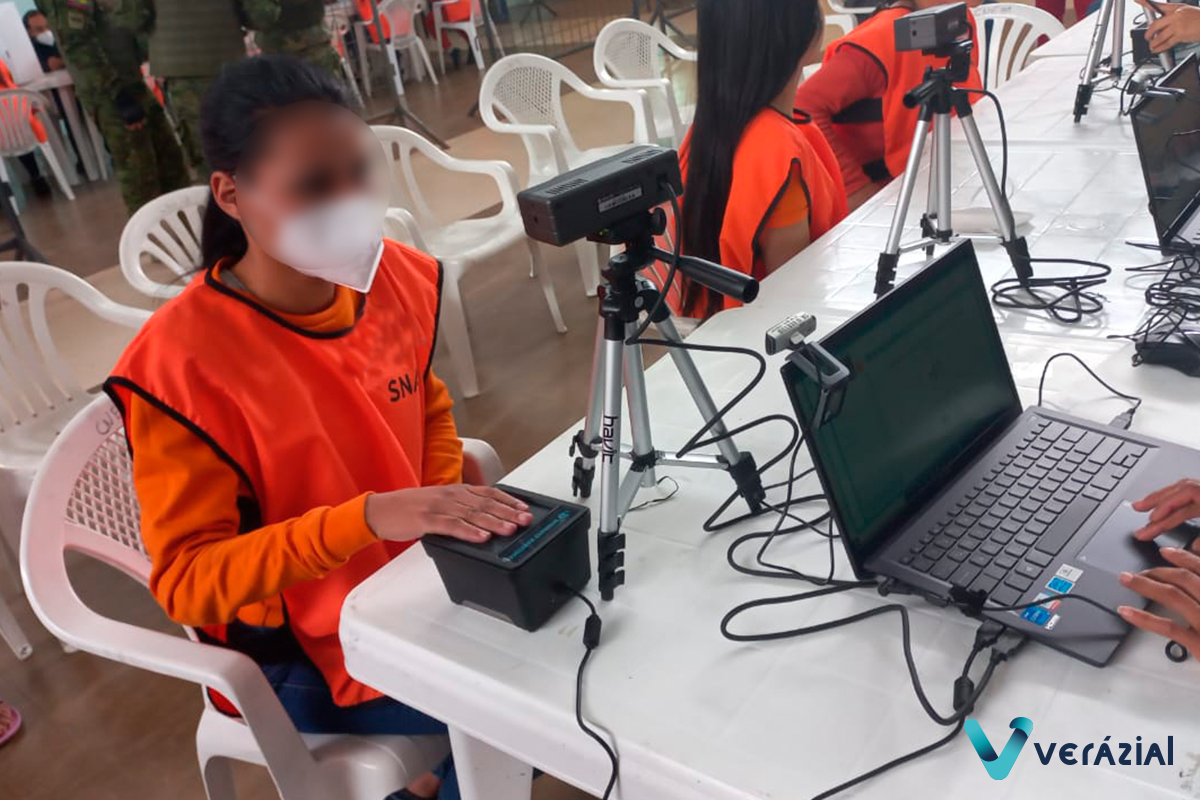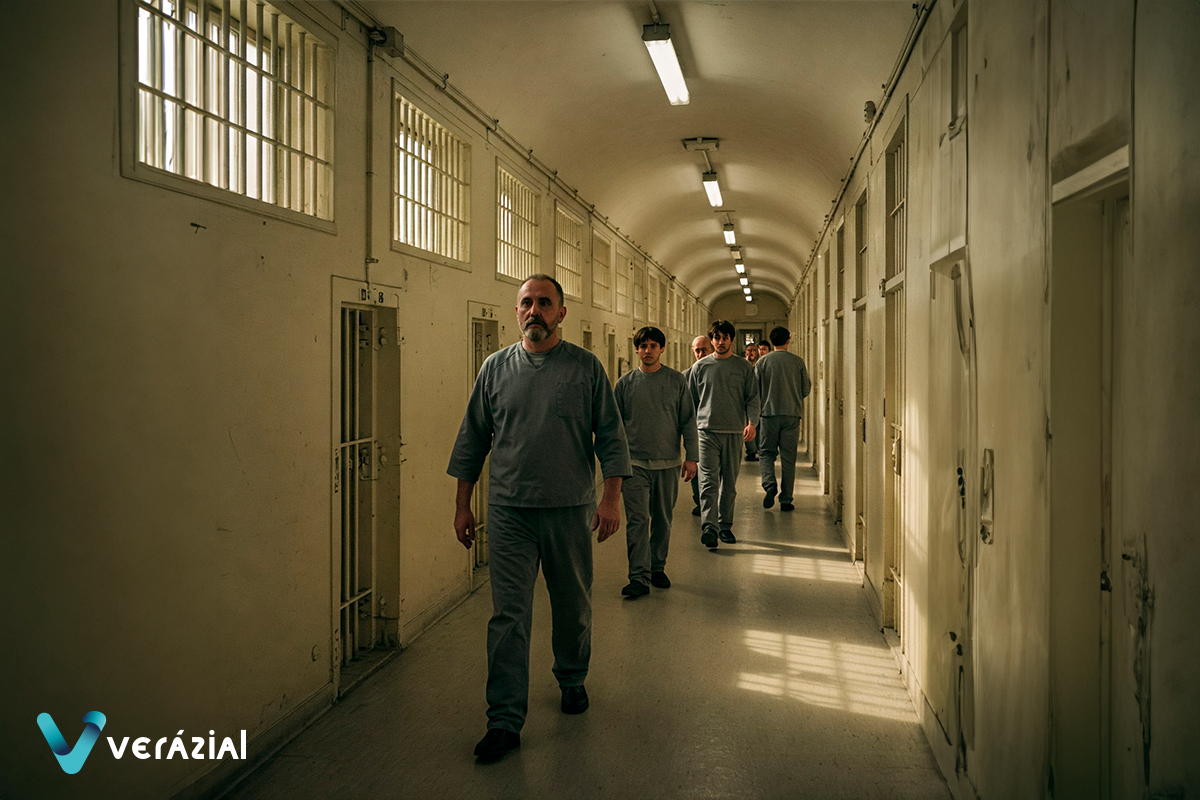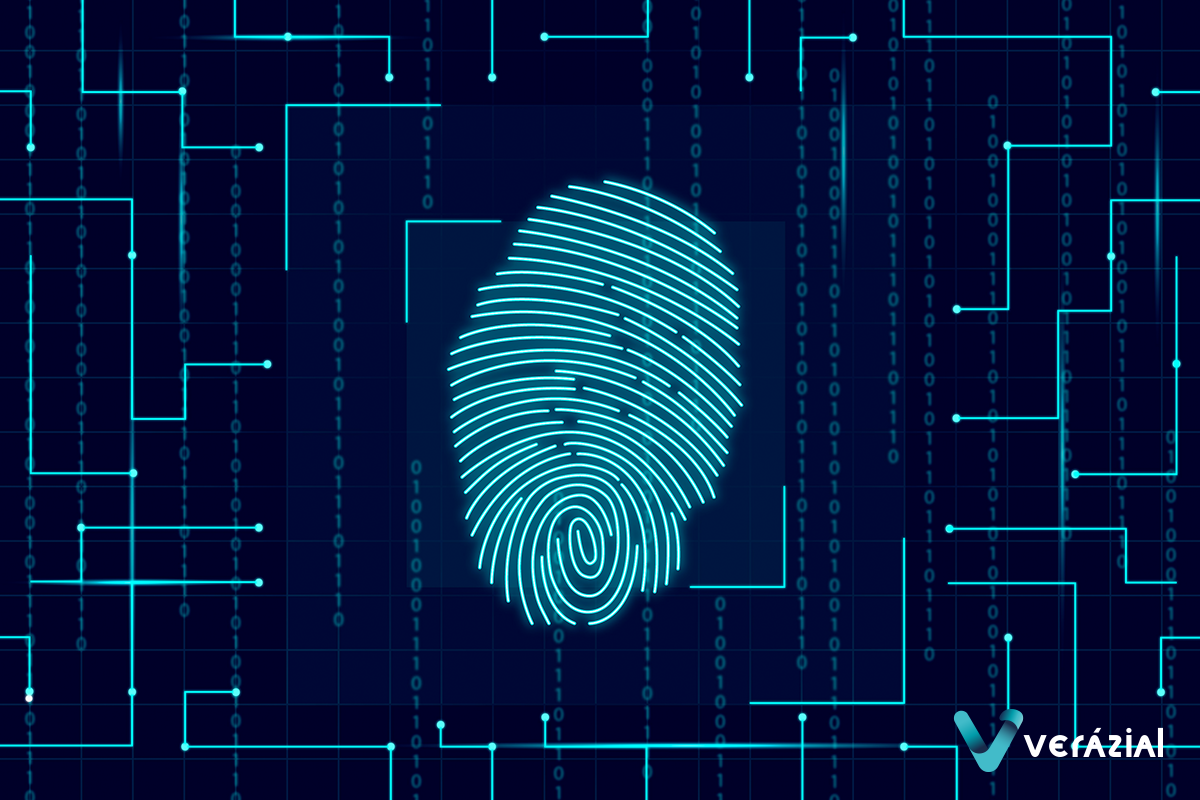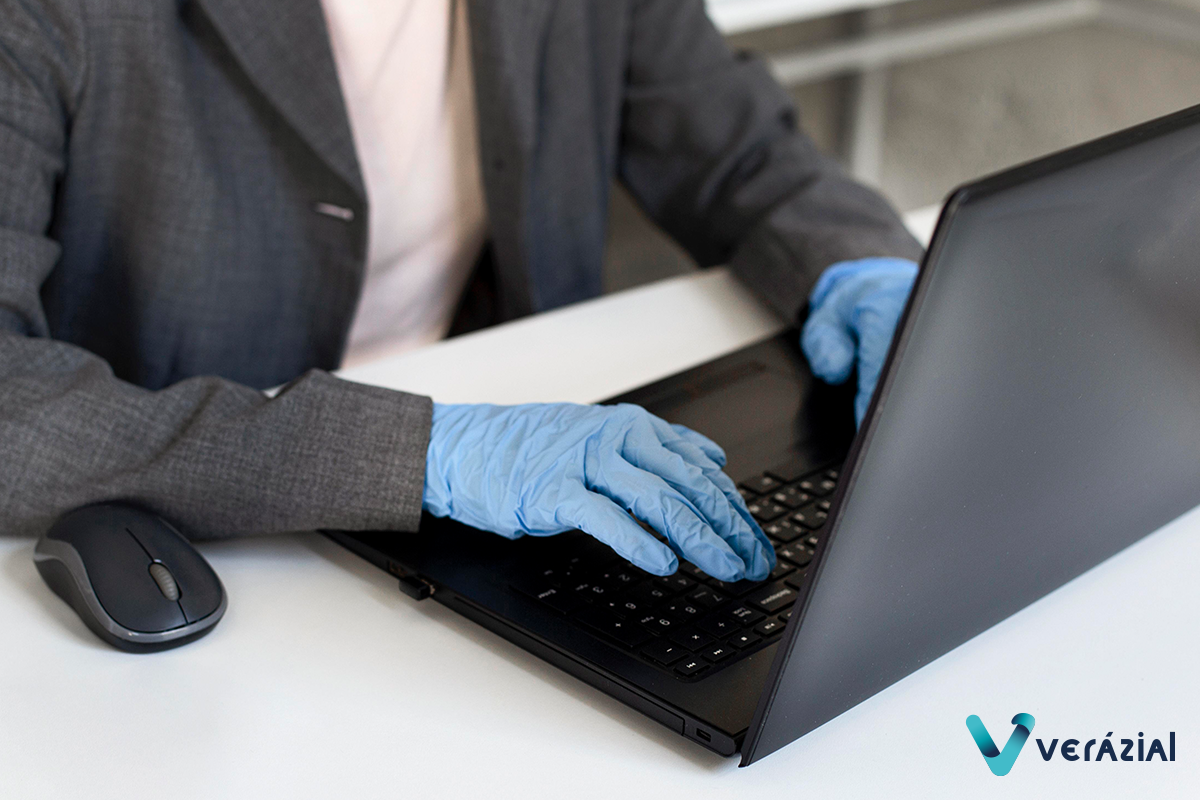Benefits of biometric technology for identification of individuals in prisons
Verifying the identity of individuals in prisons facilities is essential, but current methods are slow and susceptible to errors. The efficient solution is to implement biometric technologies, which provide greater control, agility and security in these environments.
The increase in crime worldwide has added an additional burden on law enforcement, which must safely manage the growing prison population and the increase in identification searches.
Because correctional facilities are maximum security environments, it is crucial to maintain rigorous control of all entries and exits to ensure security. Frequent entrants and exits include facility employees, visitors (such as family, friends and lawyers), suppliers of the supplies (such as food and equipment) and inmates on temporary release who must return.
It is essential that security checks at prison entrances ensure the authenticity of the identity of those entering and leaving, in addition to verifying the validity of permits and justified reasons for access. It is also crucial that any packages brought into the facility are free of prohibited materials and substances, such as weapons or drugs.
Currently, in many prisons, manual and unsecure methods are used to verify the identity of individuals. This procedure involves officials requesting identification from individuals and conducting a visual review of the document presented. This information is then recorded on paper forms or consulted on a computer to verify its authenticity. However, the crucial aspect is that identity verification is carried out manually, which increases the risk of impersonation. There is a possibility that identification documents may be forged or that officials may make mistakes during the process, compromising the security of the center’s identification system.
At the same time, various correctional facilities have implemented technologies and prison management systems aimed at improving compliance with requirements and enhancing security. However, these systems have not managed to keep up with the constantly changing security industry regulations, nor have they effectively addressed the complexity of managing internal databases to ensure accurate and reliable identifications.
It is essential to have a complete register of inmates containing all identifying details, such as:
- Biographical / demographic data (photo, name, ID numbers, date of birth, address, family members, etc.)
- Physical data (anthropometric, physical damage, tattoos, etc.)
- Prison data (alias, gang, crime or misdemeanor, location in prison, etc.)
In the case of the external, it is essential to have a record of:
- Biographic / Demographic Data
- Relationship with the inmate or inmates, if a visitor. Or with a staff member, if a supplier. Center, department, and role if an employee.
All of this information is used to identify individuals. It will be the responsibility of the officer or security guard to visually verify that the person in front of them matches the identity they claim to have. This involves checking their identification document and comparing it with their physical appearance
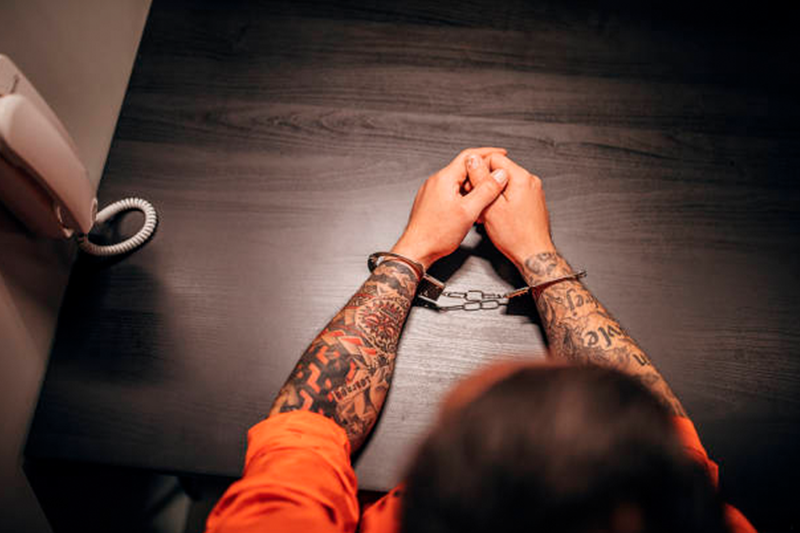
Consequences of the operation of current processes
Regardless of the method of identification used in prisons, there are a number of alarming problems that require immediate action.
- Inmates continue to use impersonation as a tactic to evade detention, even going to the extreme of using physical force, either to leave in place of another inmate or in place of a legitimate visitor. This action not only undermines the security of the facility, but also puts the physical and emotional integrity of the individuals involved at risk.
- Unauthorized individuals are observed entering and visiting inmates, resulting in a lack of precise information about who has been visited and by whom, posing a threat to security and control within the institution.
- The presence of individuals entering the prison under false identities, either posing as workers or suppliers, represents a serious threat, as they can access sensitive areas that could be manipulated or damaged, endangering both inmates and prison staff.
- Delays in the identification and visitor registration process contribute to the formation of long lines of visitors in prisons, which negatively affects operational efficiency and creates situations conducive to disruption of order and potential conflicts among visitors.
Biometric technology to ensure accurate identification of individuals
The ideal solution to solve the problems of identifying individuals in prisons is the implementation of biometric technologies. These technologies use the unique characteristics of the body, such as fingerprints, facial features, voice or iris, to identify each individual accurately and securely.
For the specific case of prisons, identification with biometric technology brings several benefits, such as:
- Access Control: Biometric technology records all entry and exit movements, maintaining detailed control of the status of inmates and visitors. This accurate record enhances facility security and facilitates real-time auditing and access monitoring.
- Individual Identification: The system can compare and verify an individual’s fingerprints, iris, or face against those stored in the database. This facilitates the quick and accurate identification of any person within the prison, helping to prevent identity theft and other fraud.
- Prison Census: Biometric technology facilitates the creation of a reliable and updated database of the entire prison population. These censuses allow a detailed control of each penitentiary center, improving the management and planning of resources and ensuring adequate supervision of all inmates.
- Streamlining the entry process: The implementation of biometric systems significantly reduces the time required to verify the identity of visitors and staff, eliminating long lines and improving the operational efficiency of the prison.
- Behavior prediction: Biometric identification makes it possible to analyze patterns and behaviors of inmates, helping to foresee possible incidents and identify connections between inmates and their visitors. This can be crucial to anticipate and prevent criminal activity inside and outside the prison, improving the security of the institution.
Discover Verázial ID Prisons, a secure solution specially designed for correctional facilities that comprehensively addresses the identification challenges of inmates, staff, visitors and outsiders in these environments.
Contact us for a demonstration and/or personalized study.
References
- Man in an interrogation of a prison [Istock]
Benefits of biometric technology for identification of individuals in prisons
Verifying the identity of individuals in prisons facilities is essential, but current methods are slow and susceptible to errors. The efficient solution is to implement biometric technologies, which provide greater control, agility and security in these environments.
The increase in crime worldwide has added an additional burden on law enforcement, which must safely manage the growing prison population and the increase in identification searches.
Because correctional facilities are maximum security environments, it is crucial to maintain rigorous control of all entries and exits to ensure security. Frequent entrants and exits include facility employees, visitors (such as family, friends and lawyers), suppliers of the supplies (such as food and equipment) and inmates on temporary release who must return.
It is essential that security checks at prison entrances ensure the authenticity of the identity of those entering and leaving, in addition to verifying the validity of permits and justified reasons for access. It is also crucial that any packages brought into the facility are free of prohibited materials and substances, such as weapons or drugs.
Currently, in many prisons, manual and unsecure methods are used to verify the identity of individuals. This procedure involves officials requesting identification from individuals and conducting a visual review of the document presented. This information is then recorded on paper forms or consulted on a computer to verify its authenticity. However, the crucial aspect is that identity verification is carried out manually, which increases the risk of impersonation. There is a possibility that identification documents may be forged or that officials may make mistakes during the process, compromising the security of the center’s identification system.
At the same time, various correctional facilities have implemented technologies and prison management systems aimed at improving compliance with requirements and enhancing security. However, these systems have not managed to keep up with the constantly changing security industry regulations, nor have they effectively addressed the complexity of managing internal databases to ensure accurate and reliable identifications.
It is essential to have a complete register of inmates containing all identifying details, such as:
- Biographical / demographic data (photo, name, ID numbers, date of birth, address, family members, etc.)
- Physical data (anthropometric, physical damage, tattoos, etc.)
- Prison data (alias, gang, crime or misdemeanor, location in prison, etc.)
In the case of the external, it is essential to have a record of:
- Biographic / Demographic Data
- Relationship with the inmate or inmates, if a visitor. Or with a staff member, if a supplier. Center, department, and role if an employee.
All of this information is used to identify individuals. It will be the responsibility of the officer or security guard to visually verify that the person in front of them matches the identity they claim to have. This involves checking their identification document and comparing it with their physical appearance

Consequences of the operation of current processes
Regardless of the method of identification used in prisons, there are a number of alarming problems that require immediate action.
- Inmates continue to use impersonation as a tactic to evade detention, even going to the extreme of using physical force, either to leave in place of another inmate or in place of a legitimate visitor. This action not only undermines the security of the facility, but also puts the physical and emotional integrity of the individuals involved at risk.
- Unauthorized individuals are observed entering and visiting inmates, resulting in a lack of precise information about who has been visited and by whom, posing a threat to security and control within the institution.
- The presence of individuals entering the prison under false identities, either posing as workers or suppliers, represents a serious threat, as they can access sensitive areas that could be manipulated or damaged, endangering both inmates and prison staff.
- Delays in the identification and visitor registration process contribute to the formation of long lines of visitors in prisons, which negatively affects operational efficiency and creates situations conducive to disruption of order and potential conflicts among visitors.
Biometric technology to ensure accurate identification of individuals
The ideal solution to solve the problems of identifying individuals in prisons is the implementation of biometric technologies. These technologies use the unique characteristics of the body, such as fingerprints, facial features, voice or iris, to identify each individual accurately and securely.
For the specific case of prisons, identification with biometric technology brings several benefits, such as:
- Access Control: Biometric technology records all entry and exit movements, maintaining detailed control of the status of inmates and visitors. This accurate record enhances facility security and facilitates real-time auditing and access monitoring.
- Individual Identification: The system can compare and verify an individual’s fingerprints, iris, or face against those stored in the database. This facilitates the quick and accurate identification of any person within the prison, helping to prevent identity theft and other fraud.
- Prison Census: Biometric technology facilitates the creation of a reliable and updated database of the entire prison population. These censuses allow a detailed control of each penitentiary center, improving the management and planning of resources and ensuring adequate supervision of all inmates.
- Streamlining the entry process: The implementation of biometric systems significantly reduces the time required to verify the identity of visitors and staff, eliminating long lines and improving the operational efficiency of the prison.
- Behavior prediction: Biometric identification makes it possible to analyze patterns and behaviors of inmates, helping to foresee possible incidents and identify connections between inmates and their visitors. This can be crucial to anticipate and prevent criminal activity inside and outside the prison, improving the security of the institution.
Discover Verázial ID Prisons, a secure solution specially designed for correctional facilities that comprehensively addresses the identification challenges of inmates, staff, visitors and outsiders in these environments.
Contact us for a demonstration and/or personalized study.
References
- Man in an interrogation of a prison [Istock]
Benefits of biometric technology for identification of individuals in prisons
Verifying the identity of individuals in prisons facilities is essential, but current methods are slow and susceptible to errors. The efficient solution is to implement biometric technologies, which provide greater control, agility and security in these environments.
The increase in crime worldwide has added an additional burden on law enforcement, which must safely manage the growing prison population and the increase in identification searches.
Because correctional facilities are maximum security environments, it is crucial to maintain rigorous control of all entries and exits to ensure security. Frequent entrants and exits include facility employees, visitors (such as family, friends and lawyers), suppliers of the supplies (such as food and equipment) and inmates on temporary release who must return.
It is essential that security checks at prison entrances ensure the authenticity of the identity of those entering and leaving, in addition to verifying the validity of permits and justified reasons for access. It is also crucial that any packages brought into the facility are free of prohibited materials and substances, such as weapons or drugs.
Currently, in many prisons, manual and unsecure methods are used to verify the identity of individuals. This procedure involves officials requesting identification from individuals and conducting a visual review of the document presented. This information is then recorded on paper forms or consulted on a computer to verify its authenticity. However, the crucial aspect is that identity verification is carried out manually, which increases the risk of impersonation. There is a possibility that identification documents may be forged or that officials may make mistakes during the process, compromising the security of the center’s identification system.
At the same time, various correctional facilities have implemented technologies and prison management systems aimed at improving compliance with requirements and enhancing security. However, these systems have not managed to keep up with the constantly changing security industry regulations, nor have they effectively addressed the complexity of managing internal databases to ensure accurate and reliable identifications.
It is essential to have a complete register of inmates containing all identifying details, such as:
- Biographical / demographic data (photo, name, ID numbers, date of birth, address, family members, etc.)
- Physical data (anthropometric, physical damage, tattoos, etc.)
- Prison data (alias, gang, crime or misdemeanor, location in prison, etc.)
In the case of the external, it is essential to have a record of:
- Biographic / Demographic Data
- Relationship with the inmate or inmates, if a visitor. Or with a staff member, if a supplier. Center, department, and role if an employee.
All of this information is used to identify individuals. It will be the responsibility of the officer or security guard to visually verify that the person in front of them matches the identity they claim to have. This involves checking their identification document and comparing it with their physical appearance

Consequences of the operation of current processes
Regardless of the method of identification used in prisons, there are a number of alarming problems that require immediate action.
- Inmates continue to use impersonation as a tactic to evade detention, even going to the extreme of using physical force, either to leave in place of another inmate or in place of a legitimate visitor. This action not only undermines the security of the facility, but also puts the physical and emotional integrity of the individuals involved at risk.
- Unauthorized individuals are observed entering and visiting inmates, resulting in a lack of precise information about who has been visited and by whom, posing a threat to security and control within the institution.
- The presence of individuals entering the prison under false identities, either posing as workers or suppliers, represents a serious threat, as they can access sensitive areas that could be manipulated or damaged, endangering both inmates and prison staff.
- Delays in the identification and visitor registration process contribute to the formation of long lines of visitors in prisons, which negatively affects operational efficiency and creates situations conducive to disruption of order and potential conflicts among visitors.
Biometric technology to ensure accurate identification of individuals
The ideal solution to solve the problems of identifying individuals in prisons is the implementation of biometric technologies. These technologies use the unique characteristics of the body, such as fingerprints, facial features, voice or iris, to identify each individual accurately and securely.
For the specific case of prisons, identification with biometric technology brings several benefits, such as:
- Access Control: Biometric technology records all entry and exit movements, maintaining detailed control of the status of inmates and visitors. This accurate record enhances facility security and facilitates real-time auditing and access monitoring.
- Individual Identification: The system can compare and verify an individual’s fingerprints, iris, or face against those stored in the database. This facilitates the quick and accurate identification of any person within the prison, helping to prevent identity theft and other fraud.
- Prison Census: Biometric technology facilitates the creation of a reliable and updated database of the entire prison population. These censuses allow a detailed control of each penitentiary center, improving the management and planning of resources and ensuring adequate supervision of all inmates.
- Streamlining the entry process: The implementation of biometric systems significantly reduces the time required to verify the identity of visitors and staff, eliminating long lines and improving the operational efficiency of the prison.
- Behavior prediction: Biometric identification makes it possible to analyze patterns and behaviors of inmates, helping to foresee possible incidents and identify connections between inmates and their visitors. This can be crucial to anticipate and prevent criminal activity inside and outside the prison, improving the security of the institution.
Discover Verázial ID Prisons, a secure solution specially designed for correctional facilities that comprehensively addresses the identification challenges of inmates, staff, visitors and outsiders in these environments.
Contact us for a demonstration and/or personalized study.
References
- Man in an interrogation of a prison [Istock]
You May Also Like
You May Also Like

